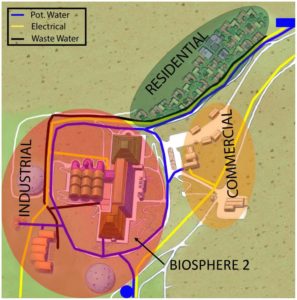
Many industrial facilities, campuses, and cities have been exploring options to achieve reliability and resilience of both energy and water system operations, especially in the context of exposures to diverse types of stresses (e.g., aging infrastructure, extreme weather events, supply chain vulnerabilities) and climate uncertainty. Microgrids have emerged as a promising approach to provide reliable and cost-effective energy services in a variety of decentralized settings. There is also growing recognition that water infrastructure requires substantial energy, and that water operations can be better managed to provide grid services. However, there has been minimal exploration in developing or analyzing integrated, optimized energy-water systems that demonstrate the feasibility and synergies associated with designing and operating energy and water systems in a coordinated framework. Energy-water microgrids—where water infrastructure plays a key role in energy load management, and where the interdependencies of both the water and energy systems are co-optimized—could be a promising solution for a wide range of geographic and economic contexts, such as isolated communities or those lacking reliable, critical infrastructure.
In this study, we use the University of Arizona’s Biosphere 2 (B2) facility as a case study for an energy-water microgrid test site, with the potential to catalyze future energy-water system integration research. B2 features both energy and water systems that can operate, or can be modified to operate, either connected to the larger power grid or independent of the grid, providing a suitable location for design and demonstration of an energy-water microgrid. We identified opportunities for energy and water efficiency and estimated the sizes of renewable energy (RE) and storage systems required to meet remaining loads in a microgrid, identified dispatchable loads in the water system, and laid the foundation for an in-depth energy-water microgrid analysis.